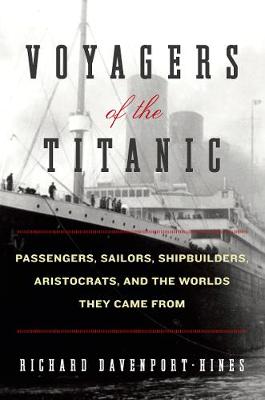Reviewed by Terri M. LeBlanc on
The book starts out very dry, like many non-fiction books I've attempted to read, with a background on the owners of the White Star Line. I couldn't wait for this section to be done because I didn't understand why I had to know this information. I felt like I was in school with no purpose for the facts about the owners and shipping mergers that ended up creating the Titanic. Since most of this part of the book dealt with knowledge about British business and shipping that I have no understanding of, I was bored until reaching the second part of the book.
The best part of the book were the rundown of the First Class, Second Class, Third Class passengers and the Officers and Crew. It was easy to connect with the stories and class struggles presented in these chapters. Some of the individuals were larger than life and others just quiet individuals looking to make a new life for themselves in America. For the lower classes and much of the crew section, since many of these individuals did not survive, I did feel like I was reading a genealogy rundown in the Bible.
Once the ship started sinking, the book felt a bit rushed--skipping from one side of the ship to the other with little explanation of ship terms (starboard, port, stern, davit, etc.) And after the introduction of many individuals in the previous section there was no rundown of who survived and who didn't.
The final chapter attempted to sum up the aftermath of the tragedy. The chapter was really mashed together and jump around quite a bit. The author didn't do a very good job of explaining, beyond the media's role in trumpeting the tragedy, what the American and British governments did to investigate. It was touched on briefly, but with little detail and only to explain the difference between the investigations.
In the end, I believe the author struggled with how to end the book. Suddenly you are reading about the death of the survivors (most pretty dramatic) and with no warning switched and ended with the iceberg melting in some warm sea in the middle of the Atlantic.
Reading updates
- Started reading
- 29 April, 2012: Finished reading
- 29 April, 2012: Reviewed
